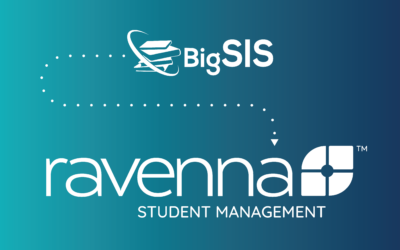
3 Key Spring Retention Strategies for Private K-12 Schools
What are some key retention strategies for Private Schools to use to build community and keep students? Consider Ravenna tools for strong communication.
Recent Blog Posts
Reflecting on Innovation and Collaboration: ATLIS Annual Conference 2024 Recap
From artificial intelligence to how independent schools can use technology to create stability, read our highlights from the ATLIS Annual Conference 2024!
Taking the Leap with AISAP’s Impactful LEAP Program for Admissions and Enrollment Professionals
In anticipation of June’s Association of Independent School Admission Professionals (AISAP) annual conference for enrollment, admissions, and school administrators, we want to highlight AISAP’s new Leadership for Enrollment and Admission Professionals (LEAP) program....
How to Differentiate Your K-12 School: Crafting a Signature School Identity
Explore strategies to make your K-12 school stand out, from crafting a compelling unique selling proposition to showcasing culture and strategic positioning.
2024 Key Trends in Admissions: Insights for a Successful Admissions Season
Download our 2024 Key Trends in Admissions Report for the latest insights, trends, and new admission strategies for K-12 private and independent schools.
Breaking Down the Financial Aid Formula for Private Schools
For private school K-12 families, financial aid can be an additional source of help to ensure their children can attend private school. Most K-12 private schools use the Parents' Financial Statement (PFS) to determine aid. It gathers information about family size,...
Connecting and Celebrating Growth: Community Brands’ Journey at the NBOA Annual Meeting
Community Brands was thrilled to join the NBOA Annual Meeting & Business Solutions Showcase in Atlanta, Georgia, this February! Known as the "city in a forest," where the lush tree canopy sets the stage for this year’s theme of “rooted in excellence, growing...
BigSIS Makes a Move: Joining the Ravenna Suite as Ravenna Student Management™!
As your school expands and achieves new milestones, we're committed to providing solutions that help your operations run even smoother and be more seamlessly connected. That's why we're excited to announce that BigSIS, a trusted student information system (SIS),...
3 Essential Steps in Selecting Your School’s Student Information System
When considering school software, it's common to focus on tactical items like cost and implementation timelines. However, the long-term structural benefits of implementing school software are often overlooked. This blog dives into how a Student Information System...
We Celebrate 2024 Catholic Schools Week
We’re so proud of the many independent and Catholic schools we support. We also wanted to highlight Catholic Schools Week 2024, which is designated to help schools connect with prospective families, donors, educators, and other community members.
How to Enhance Efficiency, Decision-Making, and Collaboration with a Student Information System
Uncover how a K-12 Student Information System (SIS) empowers increased family involvement, strategic decision-making, and personalized learning paths.
6 Proactive Strategies to Improve Student Retention and Family Engagement
Student retention strategies are beneficial to have in place all year round. The more students you retain, the higher the long-term gain. We wanted to share some key insights to help you raise the level of retention at your school.
The Future of Education: 5 Technology Trends for K-12 Private and Independent Schools in 2024
As we look forward to a promising new year, schools are exploring ways to grow their community and elevate the student and family experience. It’s clear that technology will be a vital part of educational changes throughout 2024. Take a look at these five trends to...











